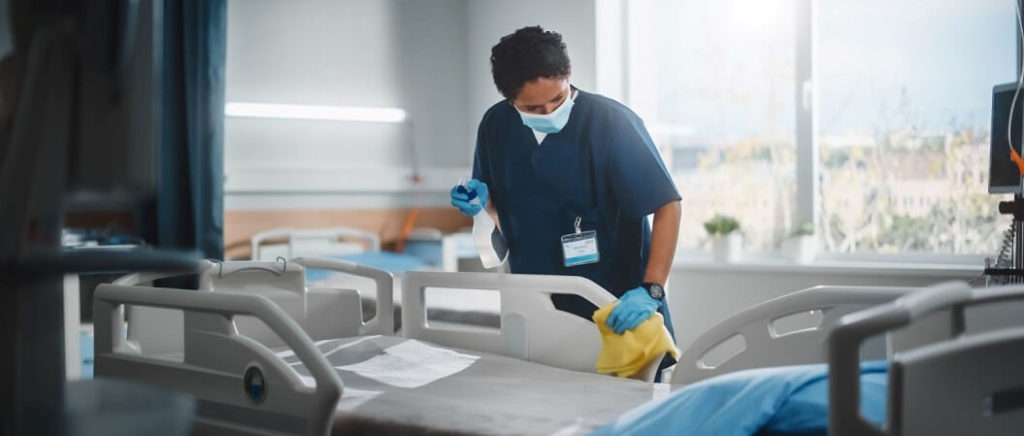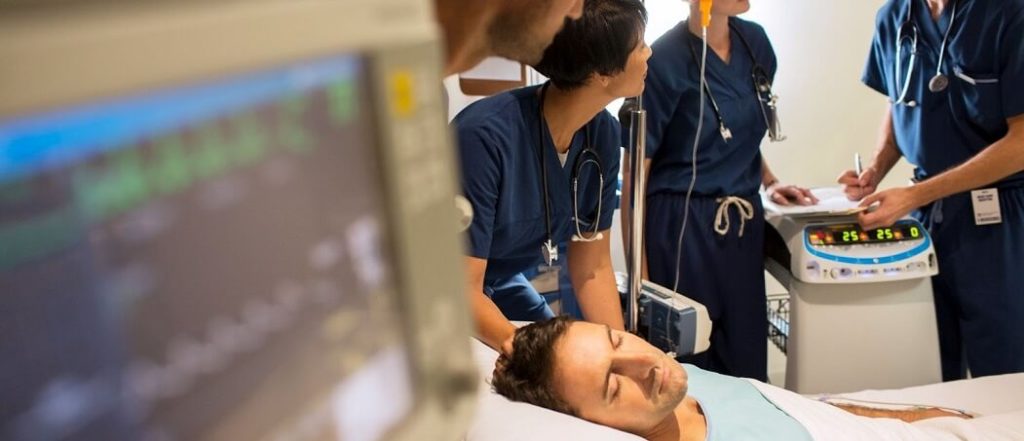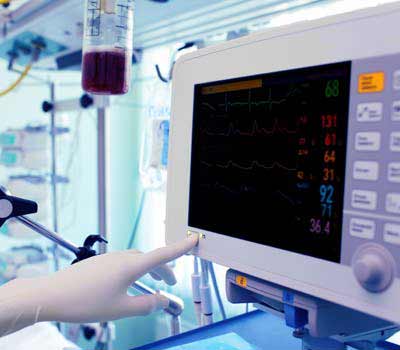Medical malpractice is more than “not liking” the results of a procedure. It’s an act (or failure to act, also known as an “omission”) performed by a physician, nurse, or other medical professional that deviates from the standard of care and causes harm to a patient.
The Suffolk County personal injury attorneys with Carner & DeVita have over 60 years of experience handling medical malpractice cases. Let us represent you and work to get the compensation you deserve. Call us today at (631) 543-7070 or contact us online for a free, no-obligation consultation.

Carner & DeVita is the leading medical malpractice firm in Suffolk County, NY
At Carner & DeVita, we prioritize responsive service, ensuring we are always ready to address each client’s unique needs. Our commitment to diligently pursuing our client’s best interests may be why many have relied on us for legal counsel for decades, repeatedly choosing us as their advocates. Indeed, the highest endorsement in any business is the continuity of client relationships through repeat engagements.
The team at Carner & DeVita is deeply engaged with the local communities where we live and practice. Leveraging our expertise and dedication, we actively contribute to making our communities better places to live, work, and conduct business.
Our Suffolk County medical malpractice lawyers get results
| $3,900,000 award in medical malpractice case
Our office in Suffolk County tried the case on behalf of a 72-year-old man with diabetic neuropathy who had to undergo knee surgery due to the delayed diagnosis of a leg fracture. |
We’ll prove the medical professional deviated from the standard of care
When a medical professional deviates from the standard of care and harms a patient through action or inaction, they may be committing malpractice. For instance, failing to provide a patient with reasonable and relevant information about their procedure could be considered a failure to provide informed consent.
| “Standard of care” is what a reasonably cautious doctor would do in the same or similar situation.
The standard of care for a cancer patient could include a recommendation for chemotherapy. While every cancer patient has different needs, a reasonable doctor with the same knowledge and experience would make the same decision. |
You only pay a fee if we win your case
Carner & DeVita works on a contingency fee basis, meaning we only get paid when you do (when you are awarded a settlement or verdict).
The contingency fee for medical malpractice is a sliding-scale that varies depending on the sums recovered.

Carner & DeVita will prove your doctor acted negligently
To prove a case for medical malpractice, your attorney must show four things:
- Doctor-patient relationship – You can’t sue a random doctor for advice you overheard at a party. You’ll have to show you had a physician-patient relationship with the doctor or medical professional you’re trying to sue. This means you “hired” the doctor, who agreed to be hired to provide you with treatment or a medical procedure.
- Negligence – You can’t sue a doctor because you’re unhappy with the result. You’ll have to prove that the doctor was negligent. Typically, a board will determine whether another doctor would have reasonably made the same or similar decisions under the same circumstances.
- Negligence caused your injury – There must be a direct link between the treatment or procedure you received and your new injury or illness. For instance, a patient who suffers infection because their doctor left a tool inside their abdomen during surgery can establish a direct link between the “treatment” and injury.
- The injury resulted in damages – You and your attorney must prove that you suffered actual damages due to the medical professional’s actions. These could be economic damages, such as lost wages, or noneconomic damages, such as pain and suffering. If no harm was suffered, malpractice laws generally don’t apply.
Our attorneys have decades of experience handling all kinds of medical malpractice cases
Failure to diagnose
Failure to diagnose encompasses several issues. These include:
- Failing to test for a possible medical condition
- Interpreting test results incorrectly
- Failing to recognize the urgency of a patient’s medical condition
Misdiagnosis
A common example of misdiagnosis is when a patient visits their doctor with complaints of chest pain, and the doctor diagnoses the ailment as indigestion when the pain is the first sign of a heart attack.
Misreading or ignoring laboratory results
Lab results may be misread by inexperienced lab technicians or by doctors who are inexperienced with a certain disease or ailment.
Failure to order proper testing
An example of this type of malpractice is a gynecologist failing to order a mammogram for a woman who reported breast changes.
Ordering or performing unnecessary surgery
Unfortunately, some doctors motivated by profit will order a surgery that isn’t needed, putting the patient in harm’s way.
An example of unnecessary surgery is a Cesarean, or C-section, performed on a woman who isn’t facing birth complications. These procedures can be very dangerous, and doctors should perform them only when medically necessary.
Surgical errors or wrong site surgery
These are perhaps some of the more terrifying examples of medical malpractice. One of the most common fatal surgical errors involves improper administration or dosage of anesthesia. Wrong-site surgery involves operating on the wrong side of the body, as was the case for a female patient whose right side of her vulva was removed when the cancerous lesion was on the left side.
Medication errors
Medication errors can occur for various reasons, including the doctor’s failure to take patient information such as allergies and other medications, confusing drugs with similar names, and inappropriate abbreviations.
Anyone involved in prescribing and administering medication can be held liable for any injury or death that occurs. This includes doctors, nurses, hospitals, pharmacies, and the pharmaceutical manufacturer.

Poor follow-up or aftercare
A physician’s job isn’t over when the procedure is. Doctors and medical professionals must check in with their patients to ensure the procedure went well without complications that must be taken care of.

Premature discharge
Premature discharge occurs when a hospital or doctor’s office releases you before you are ready. For example, surgical patients must remain at the procedure site for a certain amount of time to ensure they are recovering properly. If they aren’t but are released early, they can suffer severely.
Disregarding or failing to take appropriate patient history
Medical professionals must ask in-depth, comprehensive questions about each patient’s past and current health, medications, and family history.
Without a detailed patient history, a physician is likelier to make a mistake or prescribe an inappropriate medication.
We’ll recover maximum compensation in your Suffolk County medical malpractice case
Economic (special) damages
Economic or special damages reimburse the patient for financial costs related to the malpractice that caused their injury. These damages cover medical expenses related to the treatment or therapy needed to address or fix the injuries and lost income if the patient misses work.
Patients may be able to recover damages for future medical expenses as long as a doctor or other expert attests to the alleged future cost.
General (non-economic) damages
General damages, also known as non-economic damages, refer to a person’s suffering cost that does not have a definite price. Loss of enjoyment of life, physical and mental pain and suffering, and loss of future earning capacity are general damages.
Because there isn’t a one-size-fits-all financial remedy for enjoyment of life, for example, general damages can be quite difficult to calculate.
Our Suffolk County medical malpractice attorneys are here to help
For over 50 years, the Suffolk County personal injury lawyers at Carner & DeVita have helped injured people get the compensation they deserve. If you suspect that you or a loved one has suffered malpractice by a medical professional, our experienced lawyers are here to help.
Call us at (631) 543-7070 or online for a free, no-obligation consultation.
We answer common questions about medical malpractice in Suffolk County
What should I do after experiencing malpractice?
- Switch providers by asking for a referral – You probably have valid distrust in the system, but must seek treatment for your injury or worsened condition. Ask for a referral to see a new physician. You don’t have to speak to your current physician if you don’t want to; simply call their office and speak with a receptionist.
- Obtain a copy of your medical records – As soon as you realize you were injured, call the doctor’s office and request all your medical records. In New York, physicians must hold onto patient records for at least six years. If the office refuses, you should hire an attorney who will demand the release of the documents.
- Meet with a Suffolk County medical malpractice attorney – A Long Island medical malpractice lawyer at Carner & DeVita will help determine if you have a valid claim, and we’ll get started building a strong case if you do.
- Report the incident to the appropriate licensing board – Help prevent further harm by reporting the physician or healthcare professional to the appropriate New York licensing board.
- Manage your condition carefully – After suffering harm, you’ll probably be at least somewhat distrustful of doctors, but you must seek and follow your new physician’s guidance. Swearing off medical attention will only worsen things, and it’s important to note that malpractice is rare in modern medicine.
Who may be liable for my injury?
Depending on the facts of your case, one or more of the following parties may be liable (responsible) for your injury:
- Physician whose decisions or lack of decision caused your injury
- Hospital who employed a negligent doctor or nurse
- Pharmaceutical company that failed to warn you of the potential side effects
Speak with a medical malpractice lawyer in Long Island to understand your case’s full facts and how to file a lawsuit. Call Carner & DeVita at (631) 543-7070 today.

How long do I have to file a med mal case in Suffolk County?
In New York, a medical malpractice lawsuit must be filed within two and a half years of the date of the malpractice, with a few exceptions.
- Exception: Cancer misdiagnosis – If the medical malpractice included a failure to diagnose cancer, the statute of limitations changes to two years from the date you learn of the misdiagnosis.
- Exception: Foreign object – If you discover that a foreign object was left in your body after a medical procedure, you have the right to sue, but only if you file within one year of the date you discovered the foreign object or when you discovered facts that would lead a reasonable person to find the foreign object, whichever is earlier.
- Exception: Minor patient – Additionally, if the medical malpractice occurred when the patient was a minor, the statute of limitations is extended to 10 years from the date of the malpractice unless one of the above (cancer misdiagnosis or foreign object) applies.
We've Put Clients First Since 1957.
Learn How We'll Treat You As a Priority.
Medical Malpractice FAQs
What kinds of damages are available to the plaintiff in a medical malpractice lawsuit?






